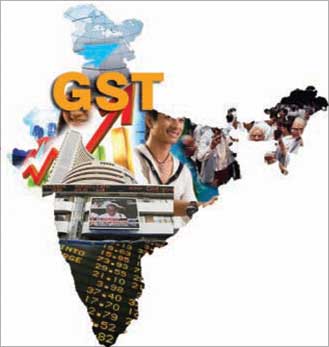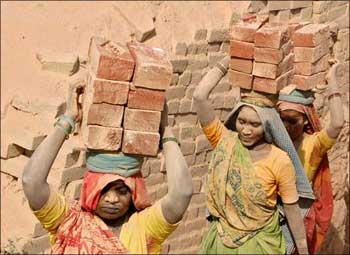
Economic policy in India, and perhaps in many other countries, is constrained by powerful prevailing myths and prejudices. Sometimes these myths simply reflect lazy thinking or an apparent immunity to facts. Sometimes they are shored up by strong vested interests. Sometimes all three.
Whatever the reason, it is hard to dispute the potency of myths in economic policy-making. Here are my ten favourites, some old, some new.
Higher minimum support prices for foodgrains are good for farmers. Not so. Yes, they are good for a powerful minority of farmers who have sizable marketable surpluses and ready access to government procurement programmes.
But the majority of Indian farmers (especially poorer marginal farmers) are hurt by higher food prices for the simple reason that they are net buyers of foodgrains.
And when you add in tens of millions of landless labourers, it is quite clear that inexorably higher MSPs for wheat and rice are often quite damaging for rural households.

The move to a Goods and Services Tax will reduce the burden of taxation.
I hope not! Or the already massive fiscal deficit will soar higher.
The more thoughtful government pronouncements do speak of a reform which is revenue-neutral or even revenue-enhancing. But there are many who tout the illusory prospect of a lower tax burden.
The underlying logic of this reform is not tax relief but rather relief from distorted economic incentives and avoidable hassles and uncertainties, which are embedded in the current system of multiple indirect taxes.

There is no role for monetary policy when inflation is driven by supply shortfalls.
Not quite. The truth is that the extent and duration of an inflationary bout triggered by a supply shock (such as a drought) do depend on the degree of accommodation offered by monetary policy.
If liquidity is excessive, the inflationary consequences will be greater; if liquidity is tighter, price increases will be less. Of course, the act of tightening monetary policy can reduce output expansion.
Hence the trade-off between inflation and growth is a live issue even when the initial shock is from the supply side.
And then there is the problem of expectations: if monetary policy stands pat in the face of supply-induced inflation, then inflationary expectations can fuel the fire.

Our labour laws protect labour.
Quite the opposite. Present laws over-protect a tiny minority (about 5 per cent of India's 450 million plus labour force, not counting government employees) at the expense of the vast majority of workers.
By making it extremely difficult to retrench workers in the organised sector, our present laws massively discourage the employment of new workers in organised enterprises.
In effect, our laws are very anti-employment and lead to huge underutilisation and "casualisation"of our most abundant resource, low-skill labour.

The exchange rate only matters to exporters.
This is a common misperception, even among trained economists.
Actually, the exchange rate is the single most important price in the economy, which powerfully influences the relative profitability of all tradable goods and services versus non-tradables (like haircuts in Delhi or restaurant meals in Mumbai).
Thus, an appreciation of the rupee (versus foreign currencies) not only makes exports less profitable but also hurts an even greater range of import substitutes, that is goods and services produced for our home market in competition with imports from abroad.

Reducing fiscal deficits hurts growth.
In the present "stimulated" environment, there is much anxiety that a reduction in the current record high fiscal deficits (over 10 per cent of GDP) will hurt growth.
The massive deficits of 2008-09 and 2009-10 were perhaps justifiable in the face of contractionary effects of the global crisis.
But these deficits are neither sustainable nor desirable. Actually, the Indian economy has grown fastest during periods when deficits were being reduced (1992-97 and 2003-08) and slower when deficits were expanding (1997-2002).
This is because less government borrowing usually facilitates more productive private investment.

Subsidies on food, fuel and electricity mainly help the poor.
Not so. The food subsidy mainly helps better-off farmers and consumers in only four or five states where the public distribution system has effective coverage.
The great majority of India's poor do not have effective access to subsidised foodgrains. Many studies have shown that the huge subsidies on petrol, diesel, LPG and kerosene mainly accrue to better-off urban households (all those fuel-guzzling cars and SUVs).
The large state subsidies on electricity for agriculture have helped to thoroughly undermine the development of a viable electricity distribution network and kept our villages in darkness.
In contrast, note how the rapid spread of mobile telephony did not need subsidies.

Foreign capital inflows are always good for our economy.
Twenty years ago, most Indians believed the opposite, that all private foreign capital inflows were bad and somehow designed to impoverish us.
In the last two decades, the conventional "wisdom" has swung to the opposite extreme. In fact, as both the Asian crisis of 1997-98 and the global financial crisis of 2008-09 have amply demonstrated, foreign capital inflows into a developing country can be a mixed blessing.
Specifically, for India, the capital inflow surge of 2005-08 posed serious problems of an overly appreciated exchange rate, excess domestic liquidity and an asset price boom.
The more thoughtful of our policy-makers, including then RBI Governor YV Reddy, grasped the need for capital account management in such situations.

Private provision of infrastructure can effectively substitute for government.
Private public partnerships (PPPs) are the ruling mantra of the day. Since the government has failed badly in providing adequate power, roads, ports, water, sanitation and so forth, we must turn to PPPs for our deliverance.
Or so runs the new myth. Of course, there is a big and useful part that the private sector can play in building up our infrastructure. But the experience from all over the world suggests that the government must continue to play the major role in this area.
In particular, PPPs cannot substitute for effective governance in infrastructure provision. Indeed, there is a growing body of experience which suggests that the governance requirements of PPPs are pretty high, if we are not to fall prey to the rip-offs of crony capitalism.

The trader (or middle man) is at the root of many of our economic problems.
This is one of our really hoary and hairy myths. Whenever the rate of inflation rises, governments blame rapacious traders and deploy regulations to control their stocking and other activities.
The truth is traders are essential to the efficient functioning of an economy. Commerce is the lifeblood of economic activity.
Of course, individual traders exploit whatever monopoly power circumstances grant them to maximise their profits. But the problem does not lie with traders. It rests with the circumstances and policies which nurture national or local monopolies and oligopolies.
The best antidote to monopolistic exploitation is competition. And that is best nurtured through better connectivity (transport and communication) and reduction of regulations and levies, which fragment markets and raise barriers to competition, whether from abroad or at home.
Unfortunately, myths have of a life of their own.
The author is Honorary Professor at ICRIER and former Chief Economic Adviser to the Government of India. Views expressed are personal.